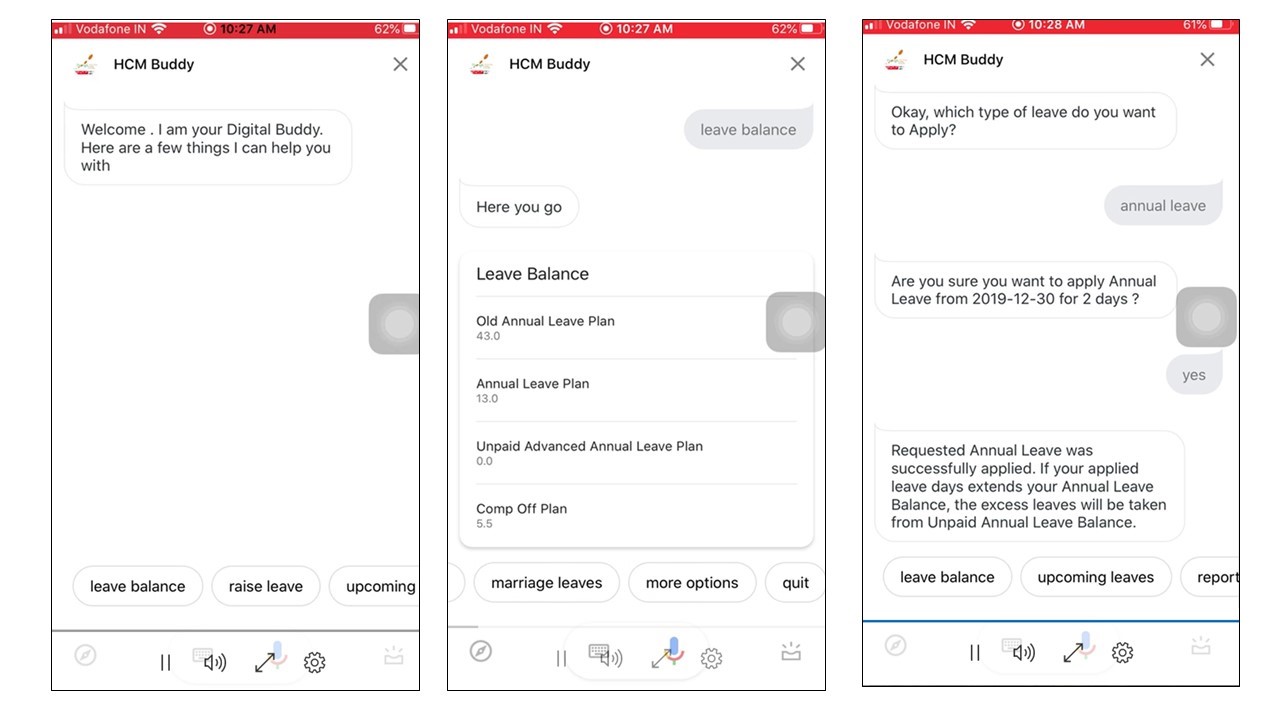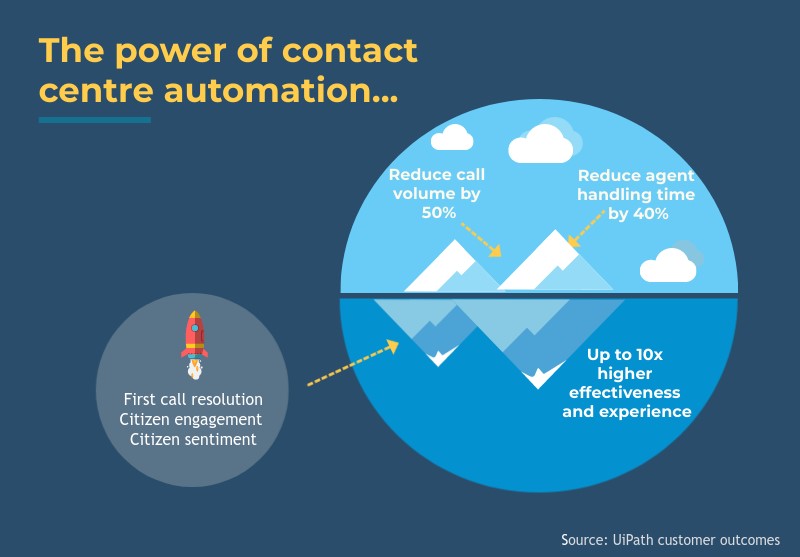You joined the Public Sector to make a difference in people’s lives, to ensure that taxpayer’s money is well spent, and to help shape the country’s future.
That just got a lot harder.

You don’t need us to tell you that we are battling against unprecedented times.
Gartner has found that IT spending will decline by 8% in 2020. Government departments are shifting their budgets to “mission-critical” initiatives rather than those that prioritise planned transformation or new services.
Digital change has accelerated. Public cloud services are predicted to grow 19% in 2020. In the first quarter of 2020 (1Q20) investment in traditional, non-cloud infrastructure plunged 16.3% year over year.
Investment in the cloud might be good news for departments held back by legacy systems and complex integrations, but implementing change at pace in response to a national crisis makes success that much more difficult to guarantee.
So, how can you make sure that you deliver the greatest impact on citizen services?
The answer is Intelligent Automation (RPA + AI).
In a recent report, Forrester determines that “Automation has been a major force reshaping work since long before the pandemic; now, it's taking on a new urgency in the context of business risk and resiliency.”
Automation is both an answer to the immediacy of COVID-19 and a long-term strategic solution that will provide greater resiliency in the future.
Three ways that you can use Intelligent Automation to improve digital services and fight against Covid-19:
- Drive zero-touch citizen services;
- Make Intelligent Automation the bedrock of HR; and
- Reignite zero-touch with automated contact centres.
Drive zero-touch services
In a speech to TechUK on 18th September 2020, Julia Lopez, Parliamentary Secretary for the Cabinet Office said that the UK Government’s vision is “to put people more in control and at the centre of the government services they use.”
With social distancing being a mandated necessity, zero-touch services are a great way to optimise resources and enable citizens to find the information they need, and request, or perform government services and processes, without contacting departments directly.
There are a number of key use cases for zero-touch digital services. Obviously, this being automation, there is some cross-over with the other use cases, but here are the core principles that zero-touch can be applied to:
Contact centres
• The public sector struggles with legacy systems exacerbated by manual data entry that lets errors into the database. This can be automated and bots can actively help an agent by supporting them both on and off calls.
• To create human-like automated responses, you need a strong knowledge base so that bots can collate the required information. But ensuring you have the knowledge isn’t the only issue—you also need to continuously update and improve the process knowledge and improvement, to make it available to your bots.
• Part of the contact centre ‘mission’ is to remove calls that are replicated or due to process deficiencies in the online/portal services for the citizen, these repeating processes are analysed and targeted for automation in bots and online portal access that enables a ‘straight through’ process for the citizen.
Provisioning
• You can manage your entire robot and process infrastructure from a single interface, enabling automation improvements and execution seamlessly.
• Citizen engagement can be analysed and automation inserted to avoid manual intervention and referral/or blockages to ensure a seamless citizen engagement.
• When an employee needs a new laptop, the download of configurations, applications and settings can be automated. This takes out the manual steps usually completed by IT and removes a significant workload. It also provides secure, safe and compliant devices to remote workers.
Access management
• The WHO has reported a fivefold increase in cyber attacks since the start of Covid-19. And recent studies show a 273% rise in large-scale data breaches in the first quarter of 2020 compared to the same time last year.
• Automated access management can eliminate the human errors and compliance risks of manual access management. It’s easier to comply with cybersecurity policies because the system can record user activities for audits.
• Burdens on IT departments need to be reduced, especially now. Automated identity management enables users to reset their own passwords, monitors rights before authorizing access, and creates a secure directory of all approved users.
The shift to remote working has caused major issues for functions that rely on office-based employees, such as IT support and service desks.
But downtime and lost productivity are not necessary—automation can pick up the work in the short term and then free up resources in the long term.
Make Intelligent Automation the bedrock of HR
HR transformation is a challenge. You need to attract and retain the best talent whilst also maintaining operational excellence. In the public sector, this is made more complicated by the need for emergency recruitment in times of national crisis.
In June 2020 the ONS reported that the UK public sector employs 500,508 people—or 16.7%—of the UK workforce. There is huge potential for automation to save time and resources and make a significant impact on public sector budgets and operational efficiency.
Running a few initial pilots can quickly illustrate the inefficiencies and repeat tasks that are holding your processes back. A good place to start is to document your employee onboarding process—you can send and track contracts, create IT accounts and track goals and milestones using bots.
Your next step is to ensure that your key HR processes are streamlined ready for unexpected shifts in demand. Here are a few ways to do that:
• Speed up your applicant screening: It’s not difficult to automate CV workflows and to screen documents for role keywords. This can also have the positive side-effect of standardizing processes across departments.
• Verify your background checks: When HR professionals are pushed for time, mistakes can be made and when citizens’ security depends on successful checks, there’s no bandwidth for errors. Bots can verify and scan documents relating to academic qualifications, employment history, references, and criminal checks.
• Process sick leave: Bots can data from a transaction in SAP, drop the information into the right systems, and print it. This can easily achieve a return on investment within six months, reduce manual effort to 5%, and processing time by 80%.
Recently, we implemented chatbots to enable employees to update requests and check their leave without needing to search system records. The screenshots below show how this hides the complexity of the process and draws on a knowledge base to provide the answers.

We’ve also used chatbots for WHO-compliant Covid-19 screening. Once the applicant has completed the screening, the bot files the answers in back-end HR applications for record management. The bot checks each day whether the employee’s condition has changed—that way, they don’t have to complete the whole screening again unless they answer “yes.”
At the end of the day, bots aren’t just about ROI—they improve employee experience and drive organisational agility. Your bots should help you to bridge the gap between your organisation and your employees.
Reignite self-service with automated contact centres
We all know that contact centres that use automation outperform those that don’t on almost every measure of customer experience: reduced call volumes and wait times, increased digital engagement, and improved customer satisfaction.
It’s fair to assume that Covid-19 has had a negative impact on these key KPIs. Zero-touch contact centres can use data to create human-like automated responses—all you need is a strong knowledge base so that bots can collate the required information.
The challenges of smart data analysis and legacy systems mean that any solution needs to be able to integrate easily with existing infrastructure. This is especially true where call waiting times and the constant legislative changes prompted by COVID-19 make it essential to deliver these changes quickly in a complex environment.
So, how can you kick off your automation for a great customer experience?
Here are a few ways to get started:
• Resolve customer issues faster: Improve self-service so that citizens do not have to go through your contact centre. When the customer is driving the experience, they’re much more likely to give positive feedback on the service.
• Collect data about why your customers are contacting you: If you know what the customer wants before they get in touch, you can reduce bottlenecks, flag inefficient processes, and identify the questions that citizens ask most frequently. You can then automate them so that they don’t need to speak to an adviser.
• Reduce your churn: Customer Service Agents are right on the frontline and supporting them with RPA can enable them to focus on building relationships with customers rather than spending time on inefficient processes. This also means that they can take more calls each day, removing the backlog.
It’s time to increase your capacity to streamline information requests and route people to information more effectively.
The infographic below shows how streamlined compliance, optimised processes, zero-touch customer self-service, and predictive analytics can drive the greatest benefits, with up to 10x higher effectiveness and experience.

Mastek helped a healthcare provider find quicker ways to assess the need for medical supplies. We used UiPath technology to ease the demand on a customer service desk and delivered an agile solution in just three days.
But we did not stop there—we dedicated four bots to the backlog and assigned specific bots to detecting and processing high-priority cases. The bots cleared a 4,500 message backlog in four days and ensured that new requests were assessed in real time.
This has been invaluable to the healthcare provider. So far, they have processed over 18,000 requests and saved 1,500 hours of work. Perhaps most importantly, they have taken the strain off frontline staff and enabled them to support other critical activities.
We have also integrated a chatbot with call centre applications so that all queries go to a chatbot first. The bot takes down the service request and creates a profile of the customer. It can do a live handover to an agent if there is a problem it can’t resolve so that the citizen journey isn’t broken.
This approach stands out for its relevance to Covid-19 where call volumes have soared and call centres have been closed. Our client experienced a 40% reduction in workload—an efficiency entirely driven by a bot with a deep knowledge base targeted at common customer queries.
There is no doubt that Covid-19 has accelerated the pace of automation, but part of this is the realisation that there is vast potential for this solution to ease the burden on the public sector and create new capacity for high-value tasks that drive citizen experience.
But none of this matters if you don’t ensure that your implementation and delivery are built to deliver the results you expect and to create a sustainable culture of digital change.

